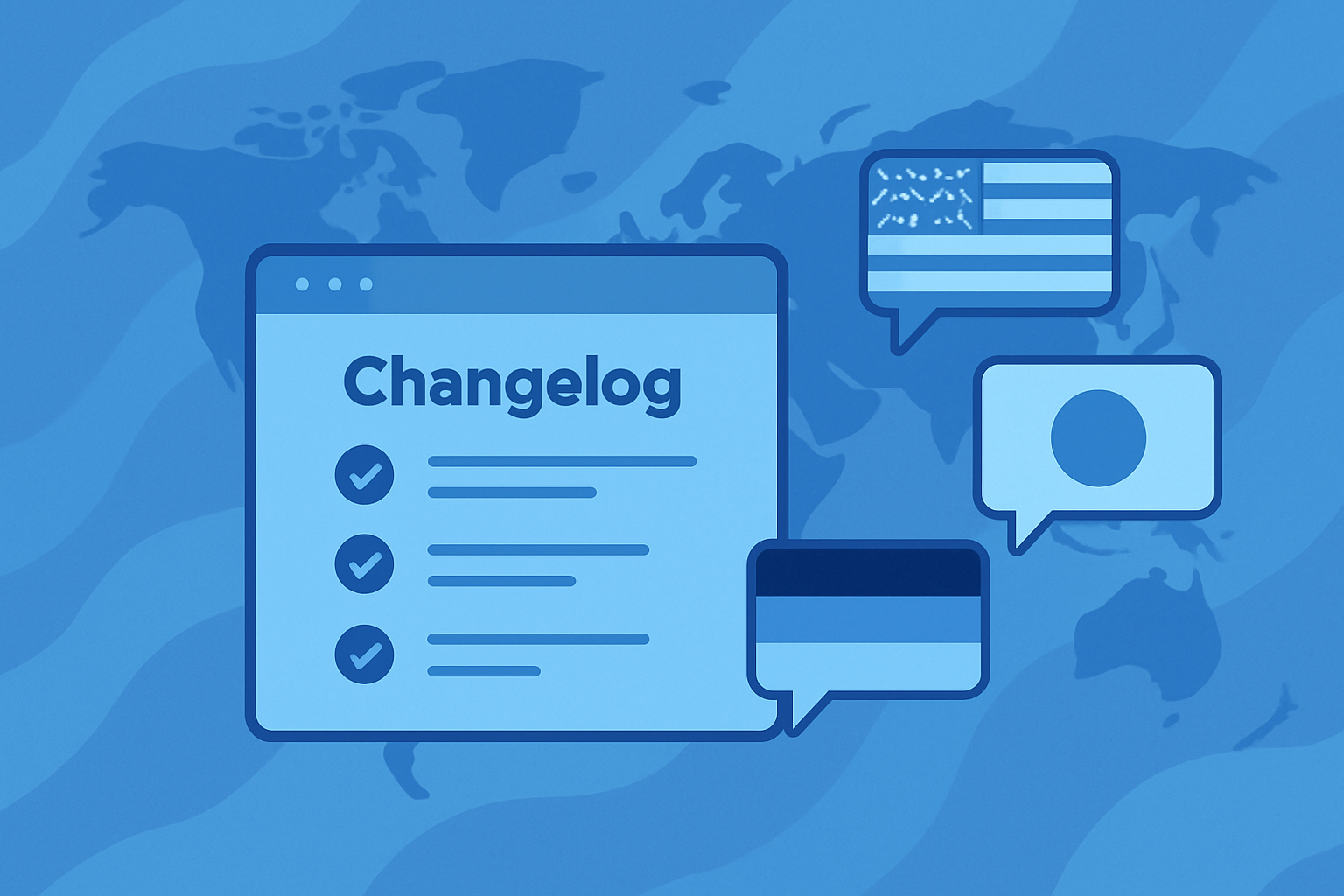Key Takeaways
- Effective changelogs drive feature adoption, build trust, and reduce support tickets.
- Traditional tools fall short due to limited customization, poor integration, and lack of analytics.
- SimpleDirect’s changelog tool solves these challenges with customizable formats, in-app visibility, seamless integration, and analytics.
- Teams using our tool see real results, including higher engagement and reduced support costs.
Introduction
In today’s fast-paced tech world, shipping updates quickly is essential for staying ahead of the competition.
But here’s the catch: no matter how many features you release or bugs you fix, if your users don’t notice your updates, you’ve lost a huge opportunity to drive engagement, adoption, and loyalty.
At SimpleDirect, we experienced this problem firsthand. Like many growing teams, we struggled to communicate product updates effectively.
Users missed out on key features, adoption rates were lower than expected, and support tickets around “how does this work?” piled up—despite us having shipped solutions.
We tried existing changelog tools, but none of them solved the problem in a way that fit our workflows or supported our vision.
So, we built our own changelog tool—a solution that was born out of necessity and designed to address the gaps we saw in the market.
This article will walk you through:
- Why communicating product updates effectively is critical.
- The limitations of traditional changelog tools.
- How our custom changelog tool solves these challenges.
- Real-world results from teams using our tool.
By the end, you’ll see how a better changelog isn’t just a feature—it’s a growth driver for your product.

Why Changelogs Matter More Than Ever
For many teams, changelogs are an afterthought. But here’s why they shouldn’t be:
- Feature adoption depends on awareness. If users don’t know about your updates, they can’t use them.
- Transparent communication builds trust. Sharing your progress shows customers you’re listening and improving your product.
- Proactive updates reduce support tickets. A clear changelog eliminates confusion, saving time for both your users and your support team.
The Hidden Costs of “Bad” Changelogs
Let’s break it down with some data:
| Problem | Impact on Teams | Impact on Customers |
|---|---|---|
| Updates go unnoticed | Low feature adoption, wasted development resources | Customers miss features that solve their problems |
| Communication feels disconnected | Teams spend extra time explaining updates manually | Users feel left out of the loop |
| No visibility into engagement | No feedback on what works or doesn’t | No personalization in communication |
According to a 2023 Product Communications Report, 72% of users say they feel frustrated when they’re unaware of product updates, and 65% say they’re less likely to adopt a feature if they don’t understand its value right away.
The Gaps in Traditional Changelog Tools
Before building our tool, we explored existing changelog solutions. While some were decent, none truly solved the core problems that teams like ours face. Here’s what we discovered:
- Rigid Templates That Don’t Fit Every Team’s Needs
Many tools assume all updates are created equal. But in reality, some updates require detailed explanations (e.g., technical releases), while others are simple highlights (e.g., minor fixes). Traditional tools don’t give teams the flexibility to customize how updates are presented.
- Poor Integration With Product Development Workflows
Changelogs often feel disconnected from the tools you’re already using—like Jira, Trello, or GitHub. This creates extra manual work for teams to copy-paste updates, leading to inconsistencies and delays.
- Limited Visibility for Users
Most changelogs live on a static webpage or in email updates that users barely notice. They’re not integrated into the product experience where they’re most likely to grab attention.
- No Analytics to Track Performance
How do you know if your changelog is working? Many tools provide little to no data about who’s engaging with your updates, which features are being adopted, or what’s resonating with users.

Why We Built SimpleDirect’s Changelog Tool
Rather than forcing our team to settle for tools that didn’t work, we decided to build something better. Here’s how our changelog tool solves the challenges we faced:
- Customizable Formats for Every Type of Update
Not all updates are created equal, and your changelog should reflect that. With SimpleDirect’s tool, you can:
- Write detailed, technical updates for developers.
- Share user-friendly highlights that focus on benefits.
- Organize updates by category (e.g., Features, Fixes, Improvements).
Example in Action:
Here’s how a SaaS team might present their updates:
| Category | Update | Audience |
|---|---|---|
| Feature Launch | “New Collaboration Dashboard” | All users |
| Bug Fixes | “Resolved issue with login timeout” | Technical users |
| Improvements | “Enhanced search functionality by 20%” | Power users |
- Seamless Integration With Existing Workflows
Our tool integrates directly with platforms like Jira, GitHub, and Slack. This means:
- Updates are automatically pulled from your development pipeline.
- Teams can review and edit updates without duplicating effort.
This reduces the overhead of maintaining changelogs and ensures consistency across teams.
- In-App Visibility to Maximize Engagement
Instead of burying your changelog on a separate page, SimpleDirect lets you embed updates directly in your product. Options include:
- A dedicated “What’s New” section in your app.
- Pop-up notifications for major updates.
- Email digests for users who prefer external communication.
The Result:
In-app changelogs have 2x higher engagement rates compared to email-only updates, based on early results from our beta users.
- With SimpleDirect, you can track:
- Open Rates: How many users viewed your updates.
- Engagement Rates: Click-throughs and interaction with new features.
- Adoption Metrics: Feature usage before and after an update.
Example: One of our customers discovered that 60% of users who engaged with an update notification went on to try the new feature within 7 days.

Real-World Results
Here’s how one of our early adopters—an international SaaS company—transformed their update process:
The Problem:
- Frequent updates, but low adoption rates.
- High volume of repetitive support tickets for new features.
The Solution:
They implemented SimpleDirect’s changelog tool to:
- Embed updates directly in their app.
- Write user-centric update notes.
- Track engagement metrics.
The Results:
- 30% increase in feature adoption within 3 months.
- 25% reduction in support tickets related to feature confusion.
- 65% of users engaging with in-app updates.
How to Get Started
Ready to create changelogs that users actually read? Follow these steps:
Step 1: Audit Your Current Changelog Process
- Where do you publish updates?
- How often do users engage with them?
Step 2: Make Updates More Visible
- Embed updates directly in your product.
- Use pop-ups, notifications, or a dedicated “What’s New” tab.
Step 3: Track What Works
- Use analytics to measure engagement with your updates.
Step 4: Try SimpleDirect’s Changelog Tool
Our tool makes it easy to communicate updates, drive adoption, and track results. Sign up for a free trial to see how it works.
Get started with SimpleDirect today. Start your free trial and take your product updates to the next level!






